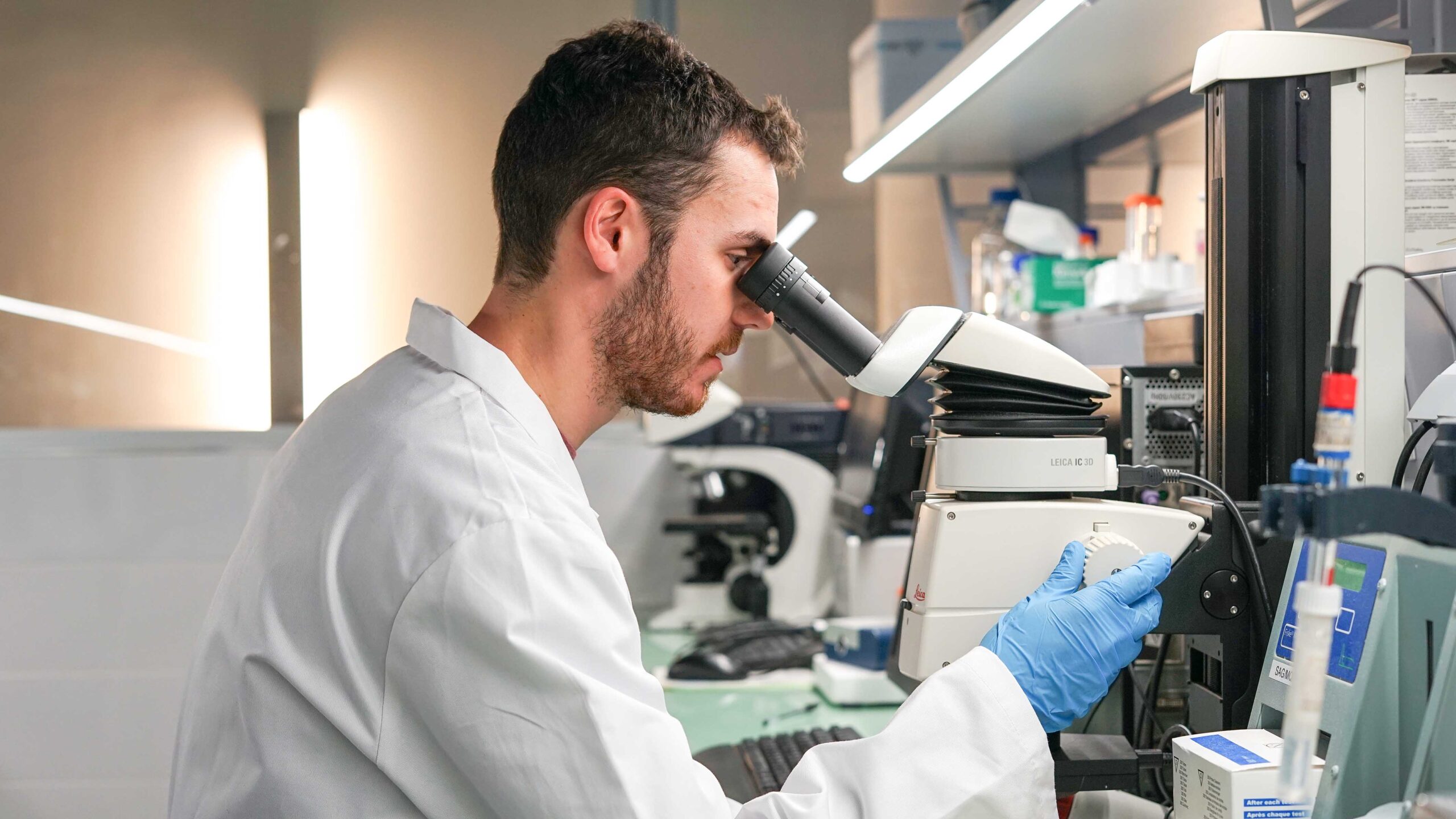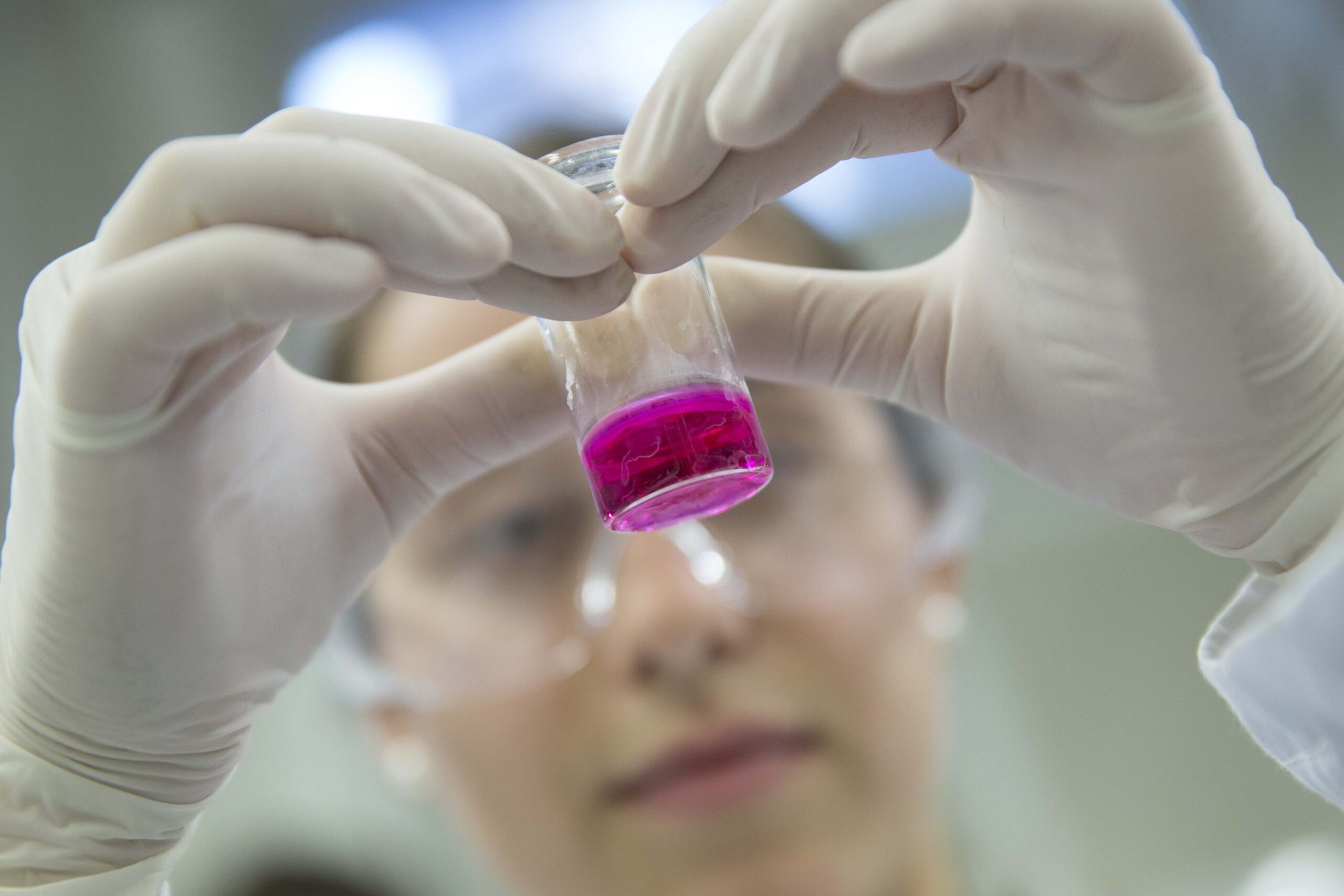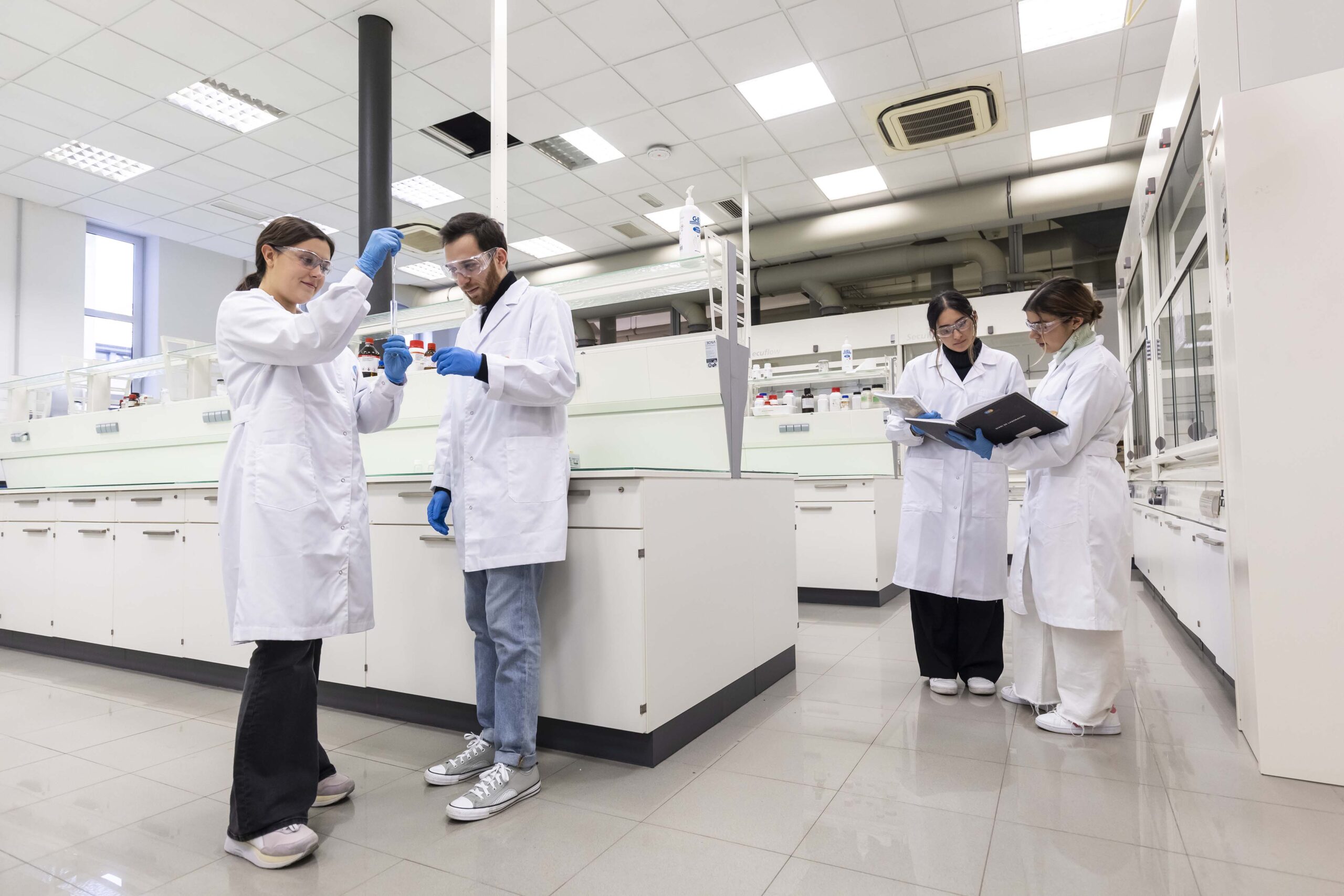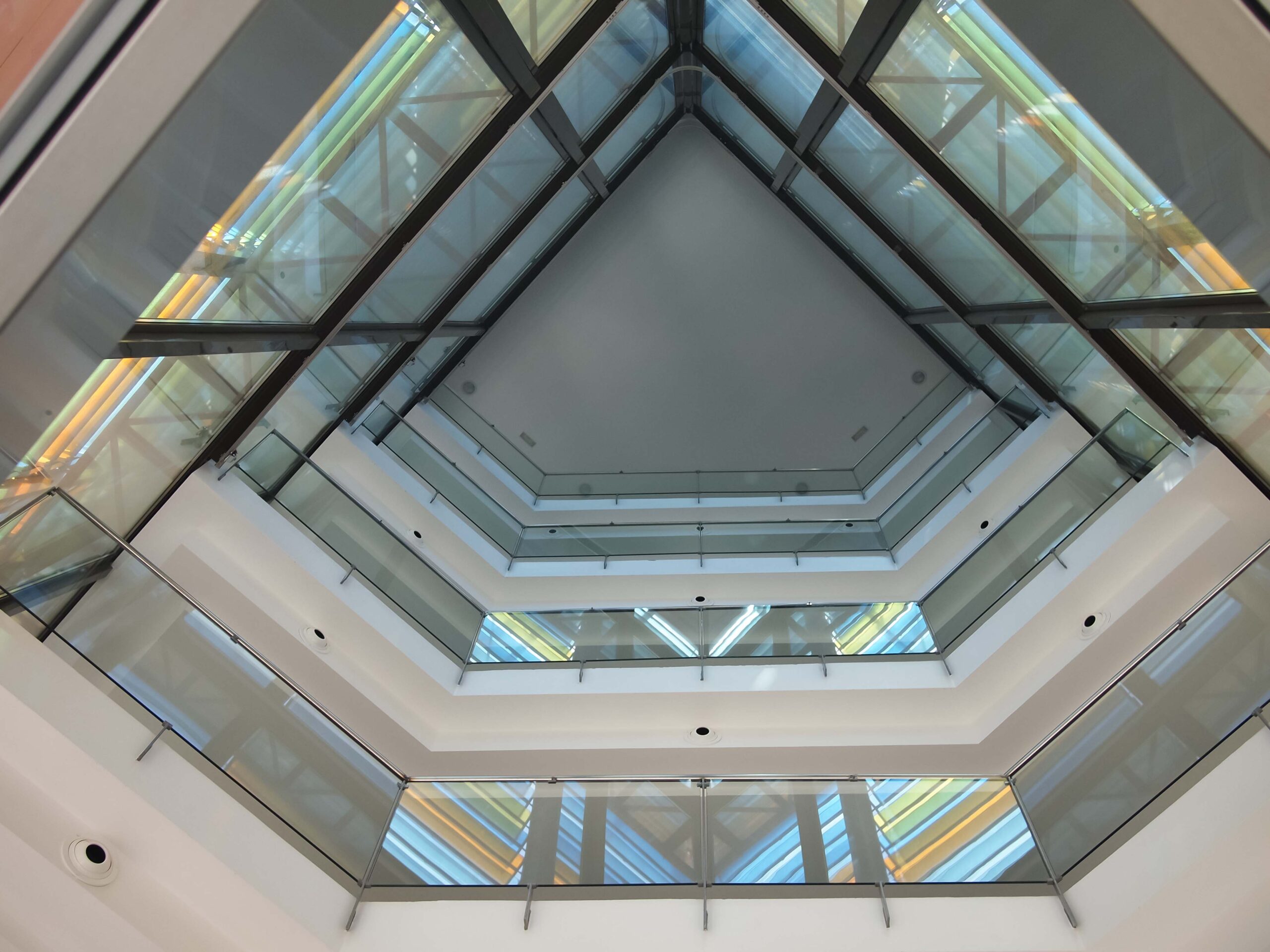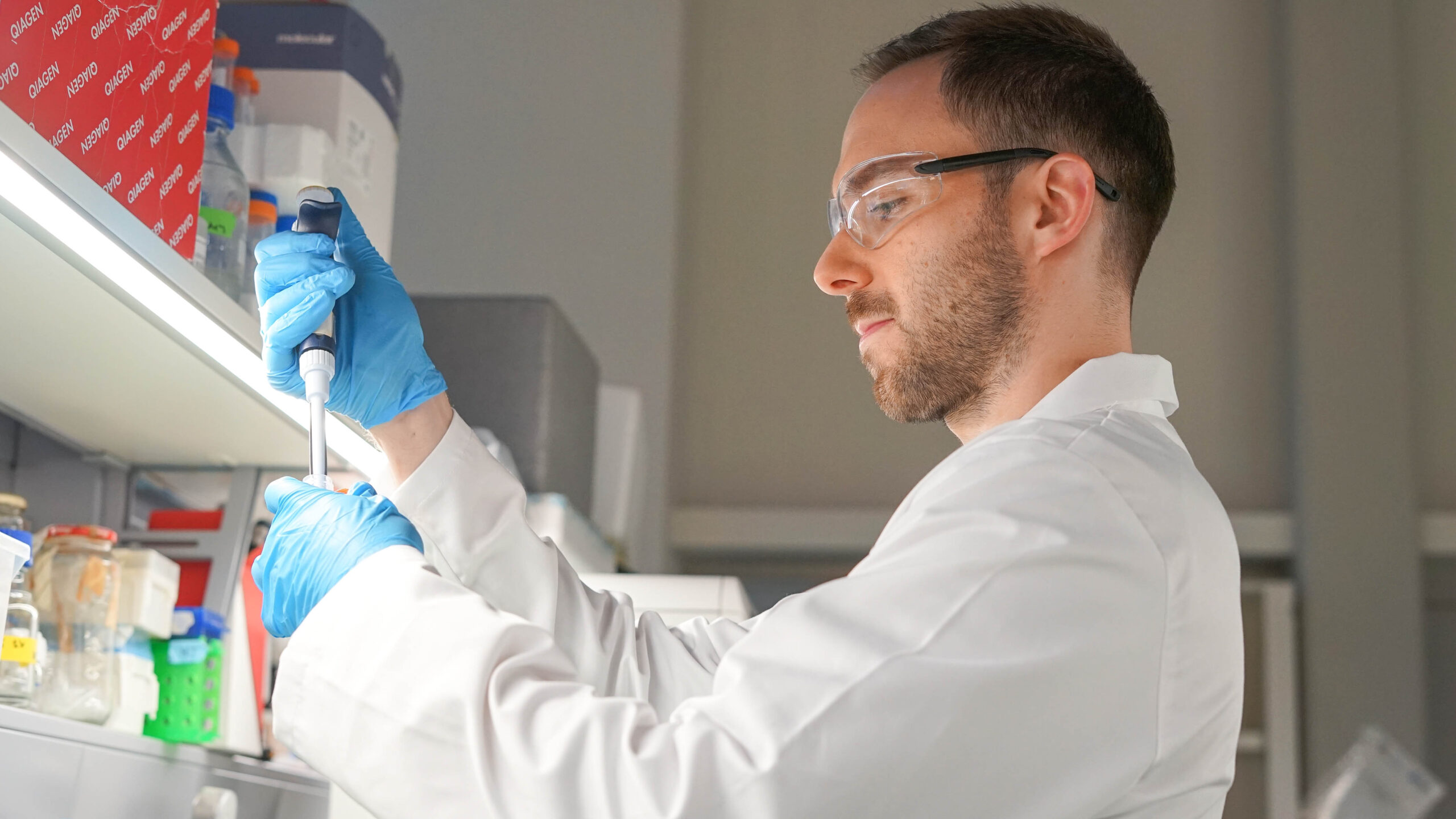“We have our mRNA encapsulated, which appears from the outset that it will be immunogenic, stable and non-toxic, with stable nanoparticles at 4ºC, and obtained through an easily scalable process.”

Dr Borrós and Dr Fornaguera, leaders of the CoviNanoVax project
The CoviNanoVax project, led by Dr Salvador Borrós and Dr Cristina Fornaguera from the IQS Department of Bioengineering, is researching the development of an mRNA vaccine based on a new encapsulation system made up of polymeric nanoparticles developed by these researchers who have spent years of investigation in the field of nanoparticles.
This project has been funded within the call for research projects on SARS-CoV-2 and Covid-19 promoted by the Spanish Ministry of Science and Innovation through the Carlos III Health Institute.
We spoke with the two researches about the progress of their investigation and where they stand currently.
What's your assessment of the last seven months of your work?
CF. Our assessment is that it has been great! We've had extremely positive results over the last few months. We began on 1 May and were able to get started through prior knowledge from our experience in the field of biocompatible and biodegradable polymers. We have our own library of polymers, and we knew which ones in particular were capable of targeting dendritic cells. What we lacked was an in-depth look at the synthesis of mRNA, which is the antigenic part of the vaccine.
We've been working on this and on the formulation of nanoparticles throughout this time. What have we achieved over this time? Well, we've been able to synthesize mRNA ourselves, which lowers the price of the vaccine first of all. And second, it gives us more versatility to be able to synthesize the antigen we need. Finally, we managed to form the nanoparticles with this mRNA, in a correct and automated manner, with an easily scalable system that can be carried out under GMP standards, which are necessary in the pharmaceutical industry.
In parallel, we're also working on administration methods. Like all nanomedicine research, we begin with intravenous formulations then seek adaptation to different routes.
Who have you collaborated with on the project?
SB. We work along with experts in immunobiology from the Biomedical Management Foundation of Cádiz, who have helped us to design the synthesis of antigenic RNA.
CF. They designed the constructs to make the resulting protein a stable protein according to its required properties. These properties depend on how the plasmid was designed, and it is from this plasmid that we get the mRNA and protein. We hope they can test human primary dendritic cell activation in upcoming months to see if the vaccine will end up doing what it is supposed to do.
We have done some preliminary in vitro tests, and everything seems to indicate that it will be effective. The results have been very promising. The initial vaccination tests on mice are also being done, and we hope to have results from the tests very soon!
What contribution does your vaccine make? What makes it different?
SB. Our vaccine is similar in technology to the ones developed by Moderna and Pfizer-BioNTech. This is all thanks to the development of the technology for much more stable mRNA, which can be injected without rapidly degrading and features a greatly improved encapsulation and protection system. All of this represents a huge leap forward in vaccination systems because it will make mRNA vaccines one of the most important types of vaccination in the future. And we're also talking about traditional vaccination, like in other projects such as in the field of immuno-oncology, which we were already working on before.
CF. In fact, as with most research in the field of Covid-19, in which many cancer vaccines were being developed previously, the principle is very similar. Regarding the case of cancer, you have to wait for the development of the disease to find the antigen and stop it, while in the case of an infectious disease, vaccination is preventive to try to avoid it. But the immunological activation mechanism is the same. This is what led us to working to find this new vaccine.
Can you give us a summary?
SB. We now have encapsulated mRNA that appears, from in vitro testing, to be immunogenic and stable. And we know that this mRNA injected into input animals is not toxic. Another important note is that our nanoparticles are stable at 4 ºC for over seven days. This is a crucial feature for conservation and transport.
Why are the storage temperatures so different? Some at 4 ºC and others at -80 ºC?
CF. The difference is in the stability of the encapsulation material. MRNA is a very labile molecule, it breaks down quickly. There are modified RNAs that are more stable, but they have to be protected in some way. Our group has come up with a formulation that leaves it very well protected and gives it greater stability. Therefore, it can be preserved at temperatures that are not so extreme.
SB. As we have already discussed, all of this derives from the knowledge we have acquired over a long time doing research in this field. We know how to encapsulate mRNA, how to protect it, and how to produce it on a large scale.
Do you think that such cutting-edge vaccines can become universal?
Of course! Once the issue of storage temperatures has been solved, they can be distributed everywhere.
Is there any other group in Spain that is working on a project like yours?
SB. I've heard there are three others. We collaborate with the group led by Dr Felipe García, from the Hospital Clínic de Barcelona – IDIBAPS, which has experience in the development of HIV vaccines, and we are doing the two projects in a coordinated and collaborative manner in order to produce more effective research. They're also working on another project to fight against Covid-19, financed by the Carlos III Health Institute like our project.
CF. The two projects are very similar, we thought it was better to work together and mutually support each other.
Will your vaccine arrive in time to be used soon?
SB. The vaccine must comply with all regulatory protocols. At the end of the project, we'll have the vaccine ready to enter the preclinical regulatory phase. We can get that far with the funding we have. A pharmaceutical company will have to take over from then on.
Will the project have continuity?
CF. Of course! We’re all focused on addressing Covid-19 now. But, as we have commented before, our research involves technologies that can be applied in many more fields with a promising future. We will leave the technology ready in case an infectious disease or any other pathogen reappears to attack them, for cancer treatments, and more.
SB. Within this idea of preparing for possible pandemics, from the socio-strategic point of view, and if we have been able to develop technologies that, with small changes, allow us to obtain vaccines or treatments, our objective is to continue investigating and request funding to keep going forward.
